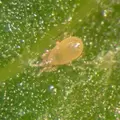Description
Neoseiulus (Amblyseius) cucumeris is a naturally occurring predator for thrips on all plant species. These little predators are good for feeding on thrips larvae, particularly the first-stage larvae, which are most susceptible. These are the 5 litre bags which will contain 100,000 mites pre-mixed with bran for easy application. It is great for applications in greenhouses, gardens and crops because it promotes an ecological approach to the biological control of pests.
Biological Features
The biological characteristics of Amblyseius cucumeris account for its rapid proliferation and effectiveness in pest control.
- Life Cycle of Amblyseius cucumeris: These creatures have a short life cycle. The eggs are laid and the eggs hatch in 2-3 days and within a week, the mites go through their different stages-larvae, nymph, and adult. When they become adults, they feed on them as well as the thrips larvae, which helps manage the pest population.
- Feeding Habits: Amblyseius cucumeris is a predatory bug that mainly feeds on small thrips larvae. An adult female thrips eats about one thrips larva per day. If there are no thrips, the mite also feeds on pollen, but it is most efficient on thrips larvae.
- Survival Without Prey: Amblyseius cucumeris will survive without food so long as pollen is available. This is a nice feature for early season applications, as there might not be any thrips yet present, while mites can wait and will still be able to feed on thrips when they do show up.
Benefits
Amblyseius cucumeris is good for non toxicity, has an economical advantage and can be easily used as a bio-control agent.
- Non-Toxic: Amblyseius cucumeris is totally harmless to humans, pets and beneficial pests. It is environmentally safe and is perfect for all organic growing practices.
- Eco-Friendly Pest Control: By putting this natural predator to use, an individual minimizes the dependence on chemical pesticides that can often be bad for beneficial pests as well as the environment. This item is a natural way to control pests.
- Cost-Effective: Amblyseius cucumeris is viewed as a long term solution for pest management. Through the use of a permanent population of mites, people are able to reduce chemical applications, pest management costs and preserve healthier, more vigorous plants.
- Versatility: These predatory mites can be used on a variety of crops including vegetables, fruiting plants, flowers, and ornamentals. They also perform well in greenhouses where thrips can be a real issue.
Application Tips
Amblyseius cucumeris applications must be done properly for thrips control and the build-up of a healthy predator population.
- Prevention and Early Release: It is best to release Amblyseius cucumeris early, before thrips populations multiply. This aggressive method will control thrips larvae before they become adults.
- Monitoring Pest Levels: Keep an eye on thrip numbers with sticky traps. Yellow or blue sticky cards are excellent in attracting and trapping thrips. This will allow to hedge the bet on the population and revise the mite release quantity if necessary.
- Best Practices for Release: After applying the mites, make sure that the plants are introduced into a conducive environment with the right temperatures and humidity levels. Monitor for populations of mites to confirm that they are set up and start managing thrips larvae.
Summary
Amblyseius cucumeris is a good natural method to manage the thrips in the plants. It is prompt and safe acting, giving long lasting control of thrips larvae without chemicals. This predator mite is a great option for organic pest control for people who control harmful pests in a greenhouse or home garden.
Reviews
No reviews found




